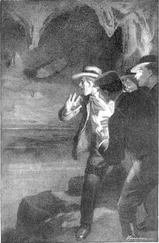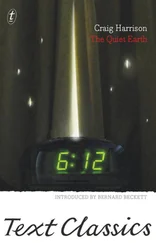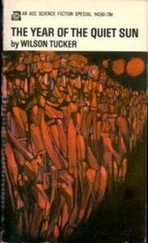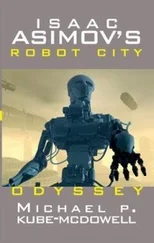In adspeak, the TC-2000 was referred to as a mature technology—which in this case meant it was guaranteed to be slow, expected to be reliable, and presumed to be a bargain. In spacespeak, the TC-2000 was disparagingly referred to as a tin can. Compared to the huge Skylink 4 and Nikkei N-2 com platforms at 175° east and 5° west, the little satellite was a mouse among the lions.
But the mouse had a secret: It was not the satellite that RJR had ordered, that Hughes had built, that the United Parcel Service had accepted for delivery to a towing and retrieval company on Technica. It was, instead, a seven-year-old TC-2000 which had been originally built for the Royal Sultanate of Brunei, but was never placed in service. It had appeared on the secondary market in midsummer, offered by the People’s Revolutionary Government of Brunei during a budget crisis—a bargain Jeremiah could not resist.
When Taiwanese technicians were finished modifying it, the TC-2000 featured a high-thrust ascent engine concealed behind the antenna skirt, an extra guidance package wired to the satellite’s transponder 4 relay circuits, and five hundred kilos of enhanced chemical explosive. For all that, it weighed just eleven kilos more than the satellite it was to replace. The switch was made at the UPS depot outside Miami, at the price of a Corvette sport flyer for the depot chief and a joybird’s enthusiastic friendship for the driver.
Three days after Dryke and Marshall’s conversation, a man in a white turtleneck and brown duck pants walked into an RJR office in Hong Kong. He inquired about certain new stock offerings and applied for a modest life insurance policy. Both transactions were bounced to the home office on transponder 4 of the satellite in slot 355. A monitor program took note, a nanoswitch closed, and the mouse roared.
Trackers at Highstar saw the satellite start to move in its orbit within seconds. But Memphis , looking ahead in its orbit past the bulk of Takara and the clutter of Skylink 4, saw nothing, even after the Highstar alert was received.
It was well past midnight in Prainha, and Matt Reid’s call roused Mikhail Dryke from a light sleep. Barefoot, hair tousled, with only a pair of half-jeans hastily added to the briefs and T-shirt he slept in, he ran down the stairs and through the halls to the orbital operations center.
By the time Dryke reached it, the center staff had a plot up on the main window, and the danger was apparent. Relative to the starship, the satellite was already moving at nearly 1,500 kph, on a looping path that would hide it behind Skylink 4 or Takara for most of its journey. The orbital mechanics were tricky, but predictable. By the time the satellite skimmed over the top of Takara, it would be just a few short seconds from its target.
“Takara’s got nothing to knock it down with,” Reid was saying, his face grave. “We’re turning the ship now”—Dryke could hear the alarms sounding in the background—“but it looks like the only shot we’ll have will light up Takara as well.”
“How much can the skin take?”
“I don’t know. Probably not enough to take the spill. I’ve got someone on the line to Governor Wian’s office. Wait—I’ve got the PF on another channel.”
Reid did not mute the link to Prainha, and Dryke listened as he talked with the Peace Force monitors on Technica.
“Yes, that’s right. We’ve got a threat to Takara and Memphis . Can you help us? No, our angle is bad. A destruct on the Hughes? No, I don’t think so. Beth—are you on with RJR? Ask them if they’ve got reentry destruct on the satellite.”
“Range, five hundred ten kilometers,” said an AIP voice in the background.
“They say reentry destruct failed,” said a woman.
“Shit,” said Reid. “Look, RJR can’t control it and they can’t destroy it. Can you do anything from the line?” He was talking to the Peace Force again.
“Not enough time,” Dryke said to himself, studying the plot of the several satellites.
“What? Was that you, Mikhail?”
“Matt, there’s not enough time. We can’t burn Takara—”
“Funny, that’s what Wian says, except he’s shouting.”
“Can’t we move the ship?” The question came from behind Reid, or from one of his open links—Dryke could not tell which.
Reid shook his head. “All we have are station-keeping thrusters. The drive is dead cold. Mikhail? What about the castle? Are we above your horizon?”
Dryke quickly got the HELcrew boss on a second window. “Just above, the long way through the atmosphere,” he reported back. “Between the scatter and the absorption, the boss says the best we can do is a suntan.”
“Range, three hundred kilometers.”
“Anybody seen the oars for this boat?” a gallows humorist muttered.
“You’re going to have to throw something at it,” Dryke said.
“Yeah. Any ideas what?”
“How about the Knights Peculiar?”
Reid turned away from his telecam. “Martin—plot collision intercepts for CT-5, CT-9, and CT-10. Plug in the masses—I need to know what happens to the pieces afterward. See if you can get me a deflection that’ll throw both of them clear.” He turned back to Dryke. “I knew I should have played more billiards when I had the chance.”
“Three-body no-cushion bank shot, on a warped table. Nothing to it.” Dryke’s words were clipped, his worry undercutting the joke.
“Range, one hundred ninety kilometers.”
“I can give it a pop with CT-9,” Martin called. “The others are too far away.”
“Get it moving, then.”
“Already is. Matt, I’ll do my best. But to knock it clear, I not only have to hit it, I have to hit it square center. Otherwise it’ll just blow by and kick the truck into a tumble.”
“Mister, either you hit it fucking square or I’ll put you outside to walk home.” The words were said calmly. “Bobby, bring up the PDS, just in case. Track it all the way, and if Takara slips out of the hairs, do me a favor and fry the damned can.”
“Sure,” the tech said with a grin. “I’ll cover Martin’s butt.”
“You toast that Hughes and you can cover my grandmother,” Reid said. “Mikhail, you still with us?”
“Yeah,” said Dryke. “So glad to see you’re all taking this so well.”
“Range, eighty kilometers.”
Reid said, “Yeah, well, there’s one other thing. The section has authorized me to tell you that we all quit.”
“No, you don’t,” Dryke said, matching Reid’s deadpan. “If you’re still there in two minutes, consider yourselves fired.”
“Noted. All right, everyone. Let’s be sharp. Marty?”
“On track.”
“Bobby?”
“I’ll pick it up off Takara’s horizon.”
“Range, twenty-five kilometers,” said the AIP.
Reid nodded, looking at a display off-screen. He drew a deep breath and pursed his lips. “Funtime,” he said under his breath. “Here she comes.”
Six and a half kilometers from Memphis , CT-9 glided stalwartly toward Takara, carrying the reflector before it as though it were entering the lists for a joust.
It went into the duel with two disadvantages—size and speed. At a spidery twenty-nine tonnes, it was only two-thirds the mass of the satellite. And even after a full minute of acceleration, its propulsion systems—designed for construction, not interception—had pushed it to a paltry few tens of meters per second. Since the equations being solved and plotted on Memphis’s bridge depended entirely on the mass and velocity of the objects and the location of the starship, those were meaningful disadvantages.
But CT-9 also had one meaningful advantage: a guiding intelligence. The satellite’s engine had finally burned out; it was coasting now, committed to its trajectory. Only the truck could counter and adjust, and so it sped in its own plodding way for the spot where the satellite would meet it.
Читать дальше
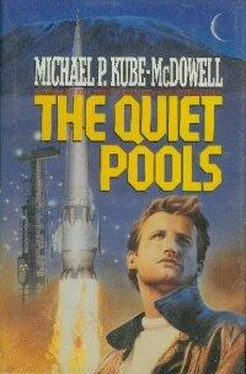
![Nick Cracknell - The Quiet Apocalypse [= Island Zero]](/books/28041/nick-cracknell-the-quiet-apocalypse-island-zero-thumb.webp)
